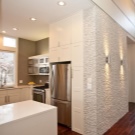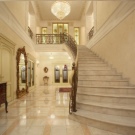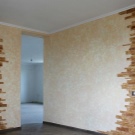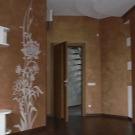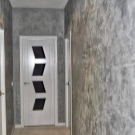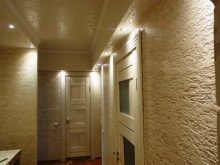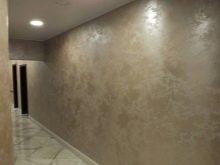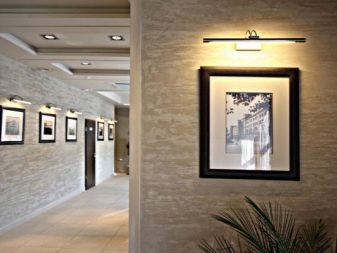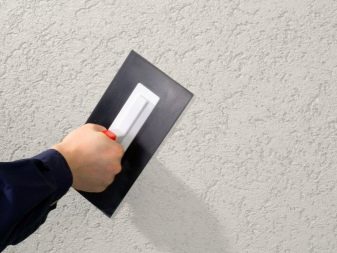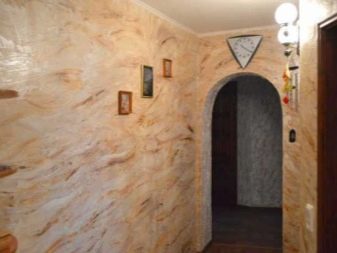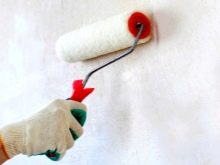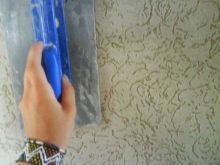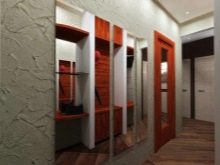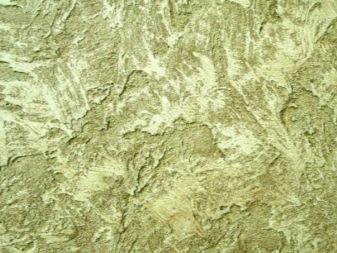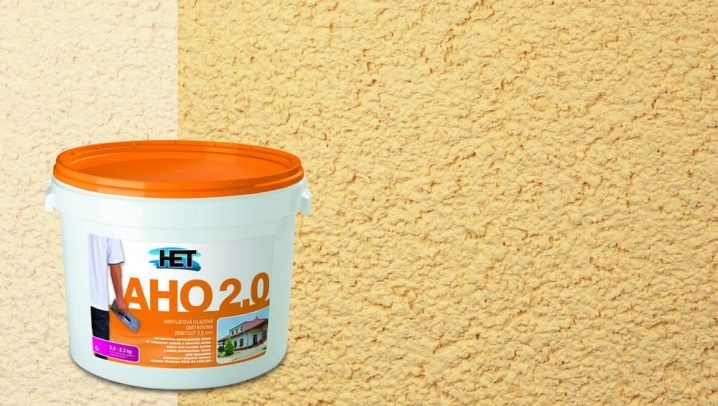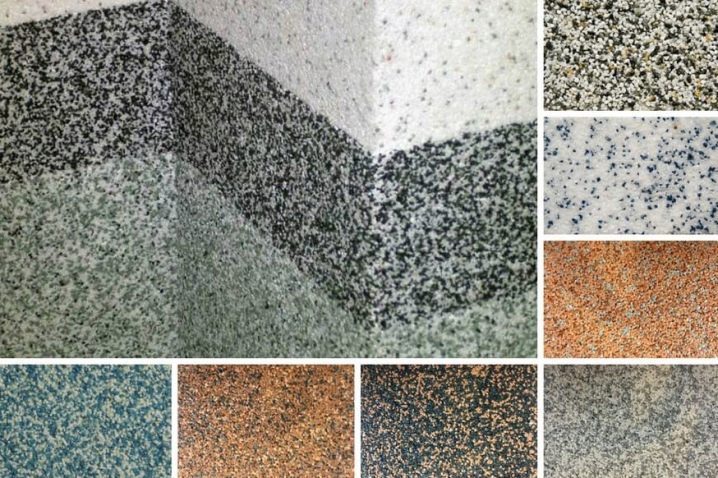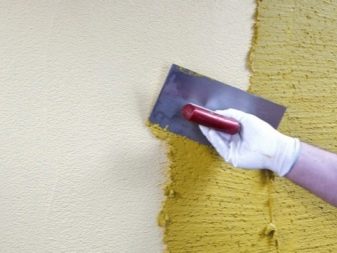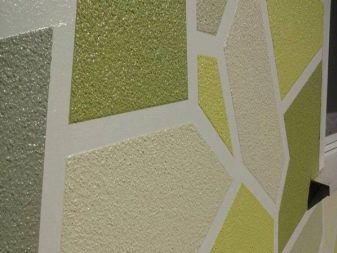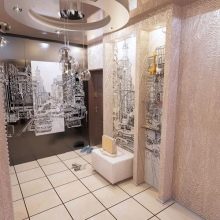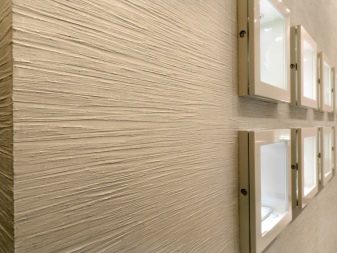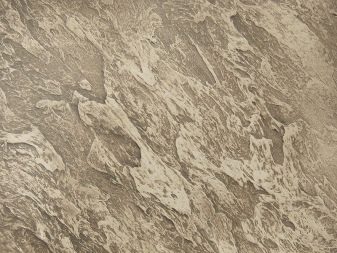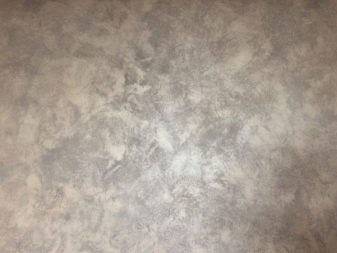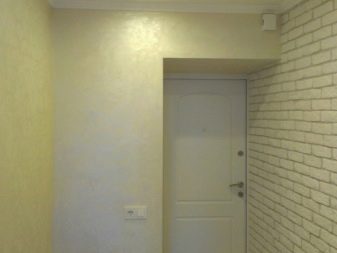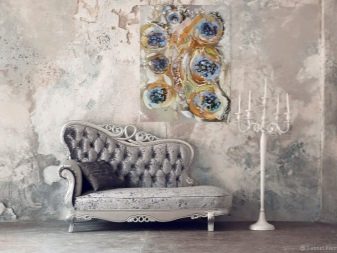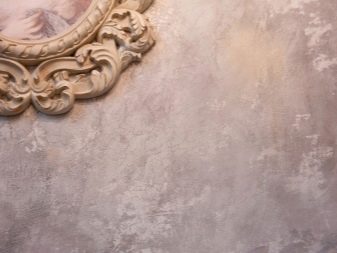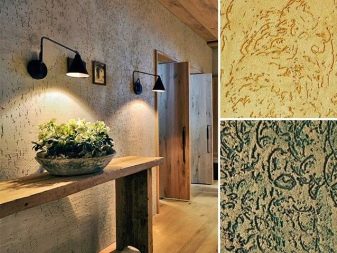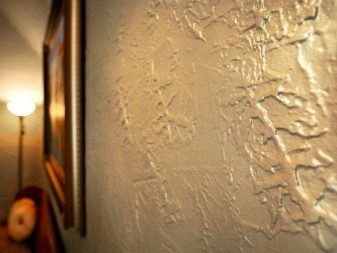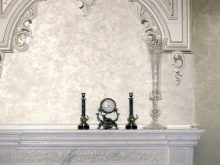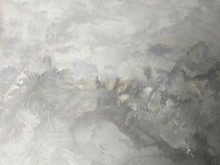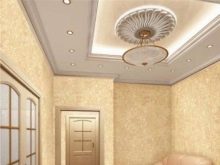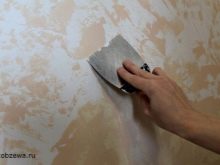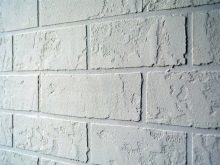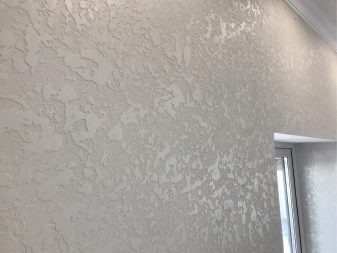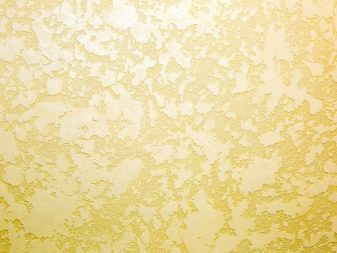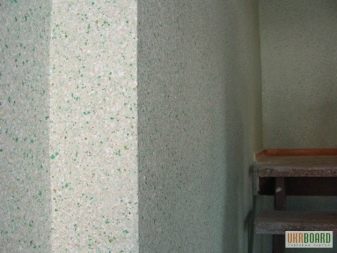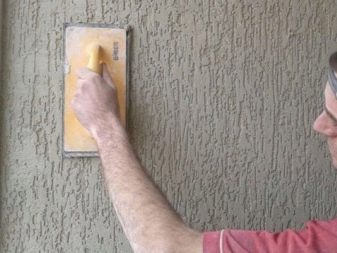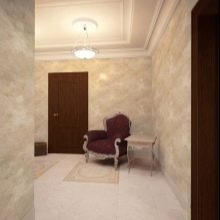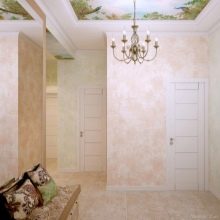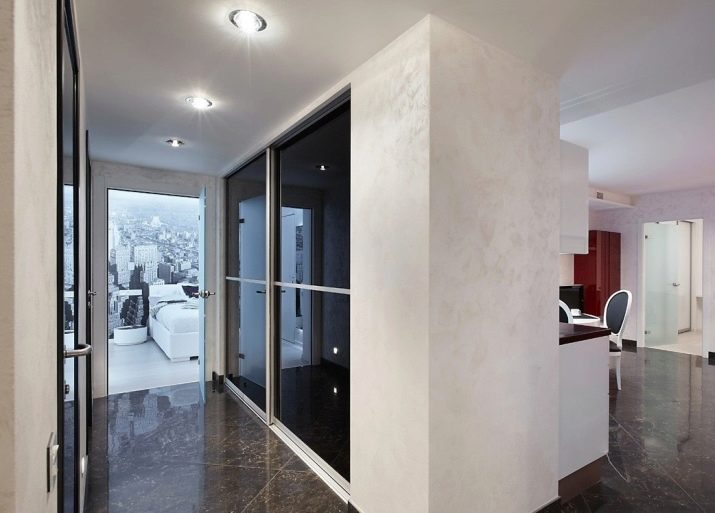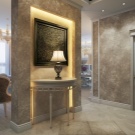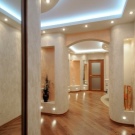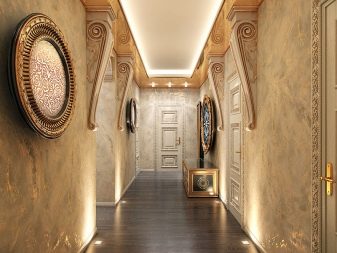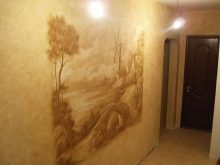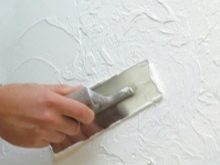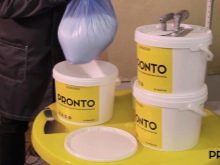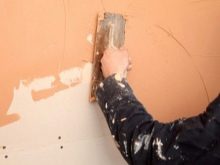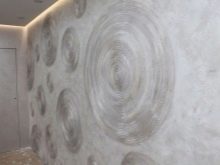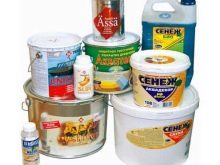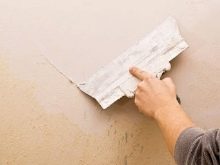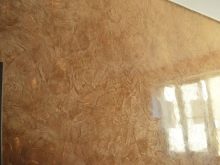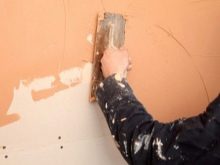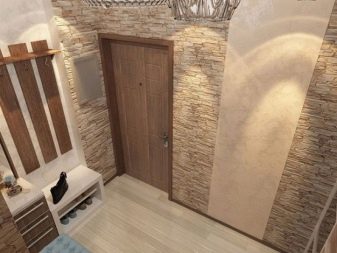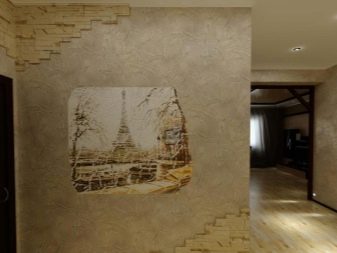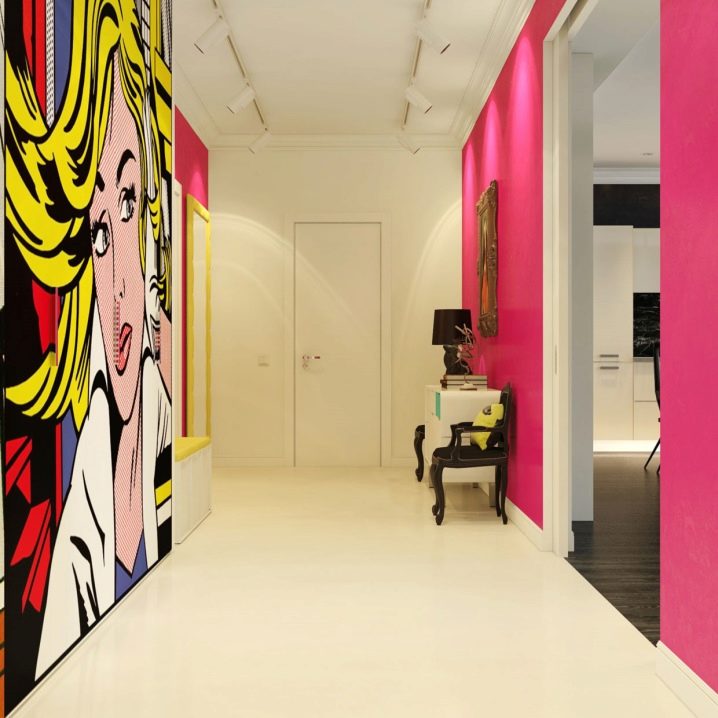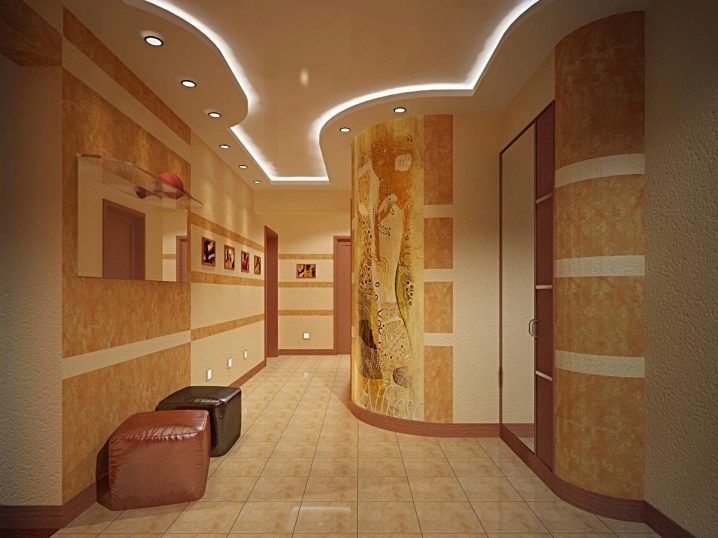Decorative plaster for interior decoration in the corridor
Decorative plaster used for interior decoration in the corridor is capable of radically transforming the interior of a hallway or hallway, highlighting the features of architecture, and hiding its flaws. You can apply the finished composition to the wall with your own hands, without resorting to outside help, completing the finishing of a corridor of any area in a few days. A detailed review will help you find out how Venetian plaster looks in the interior of the hallway, other types of such coatings, how textured finish is applied for wall decor, in what technique is the work being done.
Advantages and disadvantages
Renovation in the hallway is always associated with a large amount of work. It is quite difficult to choose the right decor for the walls, since there are many requirements for safety, environmental friendliness, durability of compositions for their decoration in residential premises. The wallpaper looks trite here, the paint is rough.
Decorative plaster can be the best solution for interior decoration of the corridor for many reasons.
Among its obvious advantages are the following.
- Durability, ease of care. The coating is dry clean, some can be washed.
- Long service life. When applied correctly, a coating of a few millimeters will retain its durability for up to 10 years.
- Maintainability. The damaged area can always be restored.
- Resistance to external factors. Even when applied to a cold wall, the material will not crack. It is suitable for rooms with different temperature conditions.
- Versatility of application. Plaster can be applied to brick, concrete, wood, plasterboard base.
- High covering ability. The material allows you to hide the unevenness of the walls, hide cracks and other defects.
- Increasing thermal insulation, the soundproofing characteristics of the wall.
- No toxic or hazardous ingredients in the composition.
Not without flaws. Plaster is quite laborious to work with, it costs more than paint or wallpaper. The surface of the wall will first have to be leveled, carefully primed. If in the future it is necessary to remove the finish, the dismantling of the plaster will require a significant investment of time and effort.
Description of species
The main classification of plaster compounds used to decorate hallways implies their division according to the type of base. There are 4 main groups.
- Silicate-based. Also known as liquid glass. An expensive composition that is quite suitable for corridors and other functional areas.
Not applicable in residential premises.
- Silicone based. Modern material with higher elasticity. Not afraid of dirt, mechanical abrasion, forms a breathable coating.
- Mineral based. Such formulations are the most common and inexpensive. Contain cement. The coating is non-flammable, resistant to moisture, and is one of the best in terms of coverage.
- Acrylic based. Polymer resins in the composition give the material high moisture resistance. Acrylic plaster can be easily painted in any desired colors and shades with the addition of pigments, it has a high drying rate.
Such plaster is sold completely ready-to-use.
Various design options obtained with plasters with special properties also need to be studied. Depending on whether it is planned to obtain a smooth or embossed finish, mixtures with coarse and fine aggregates are used. Modern manufacturers have long learned how to make plaster with the effect of aged material or with imitation of marble, there are options with which you can get the original relief of wood, eaten by insect larvae.
Each such detail makes the interior unique, despite the general similarity of finishing materials.
The following types of decorative plasters are most popular in the decoration of corridors.
- Textured. Plaster of this type has a thicker consistency than other compounds, contains marble particles that increase the strength and decorative effect of the material. The original texture of the surface is given with the help of special tools that allow imitating the skin of a reptile, natural stone, wood. Processing is carried out using stamps, applicators, rollers of various sizes and shapes.
- Smooth. Forms a perfectly even coating with a matte effect or a slight glossy shine.
Such plaster can be a good background for decorating a hallway in a minimalist style.
- Vintage. Aged effect plaster is produced on a latex base. A special application technique allows you to achieve a vintage look of the walls without additional effort. Latex base is waterproof, easy and even to lay down.
Cracked walls will effectively complement the spacious hall with a high ceiling.
- Mosaic. Mineral based plaster. The filler is marble granulate, which gives an unusual color and appearance to the finished coating.
This is an environmentally friendly finish that provides additional soundproofing to the walls.
- Structural. Contains particles of different sizes, which give the finished coating a relief. The fine-grained option is suitable for small corridors. Coarse-grained plaster will be an interesting addition to a spacious hall.
The composition is applied to the walls with a trowel, in straight or circular movements, depending on the desired result.
- Silk. Luxurious smooth plaster, ideal for well-lit corridors. This coating provides a play of color in the rays of the sun or lamps.
With well-organized lighting, the decoration will become a real decoration of the room.
- Venetian. A very popular plaster that fits well with classic interior design concepts. The thick composition contains lime and marble flour, well imitates natural stone on the walls. You can create the effect of marble coating on the walls in any color.
When working, special triangular spatulas are used, the mixture is applied to the surface in short strokes, in layers.
- Sgraffito. The so-called brick-like plaster. The unusual composition allows you to imitate wall masonry even on a glass or wood-slab, plasterboard base.
- Grotto. When it is applied, a relief pattern is formed on the wall, reminiscent of a map of the continents. Usually has a mineral base.
- Velvet. This kind of plaster is actually called flask. It is two-component - colored small particles are applied to the adhesive base. In addition to the excellent appearance, pleasant texture, such plaster also leaves considerable scope for the designer's imagination.
In addition to velvet and velor, you can achieve imitation of suede, natural stone.
- "Bark beetle". Popular mineral based plaster. With the help of special tools on its surface, it is possible to create an imitation of the moves that the larvae of beetles eat up in the tree. This finish is very popular when used in the corridor.
Choosing suitable options for plastering for the corridor, it is worth determining the desired texture, decorativeness of the walls from the very beginning.
Smooth coatings are more suitable for small spaces. In the absence of windows, natural light, it is better to choose a light, light color scheme.
Color palette
Choosing a color for decorative plaster is not an easy task. The most popular in the decoration of the corridor is considered to be gray, white, beige and brown colors. Marble Venetian plaster looks great in the typical white-black, golden-cream tones, and may have purple blotches.
The following colors are very popular in the decoration of the walls in the corridor:
- gold;
- silver;
- yellow;
- light green;
- turquoise.
Variants that mimic other coatings are also popular. For example, a plaster with a concrete texture, which has its characteristic gray color. Imitation brick or wild stone will also look the same.
Nuances of choice
When deciding to decorate the corridor in the apartment with decorative plaster, you should pay special attention to its choice. Everything is important here: the desired decorative effect, the style of interior decoration, the features of the original relief of the walls.
It is necessary to understand that decorative compositions are radically different from construction ones. They are applied in layers, with preliminary priming of the base, applying a finishing layer using a special technique.
When choosing a plaster composition for finishing a corridor, it is worth considering the following points.
- The complexity of the application. If the work is done by hand, this should be remembered first of all. A complex Venetian coating is rarely possible for anyone to lay exactly once. Whereas even beginners do an excellent job with the "bark beetle". It is worthwhile to approach this issue reasonably, to really weigh your strengths and creativity.
- Shelf life. Building materials also have it. Most of the complaints that the plaster does not lay flat on the wall are precisely related to the fact that the mixture has simply lost its properties over time.
- Basis type. Latex, acrylic and other polymer mixtures are the most elastic, dry quickly and fit well even on a not too even base. Water-based ones are sensitive to moisture, temperature extremes, suitable for interior decoration, but not outside. Cement compositions and other mineral plasters are quite simple to work with, they are cheap, but in terms of aesthetics they are much inferior to their counterparts.
- Decor type. The easiest way to decorate the corridor is with textured plaster. It is easy to apply, allows you to get different visual effects, looks presentable. Even a person who is far from the sphere of repair can cope with the application of a "bark beetle" or "fur coat" on the wall. Venetian compositions or sgraffito are much more difficult to apply on your own.
- Appointment. For interior work, a special decorative plaster is used that does not contain potentially hazardous or toxic substances. In addition, the material can have different moisture resistance, heat resistance. This should be taken into account if the finishing is supposed to be on the "cold wall", related to the facade of the house or overlooking the common entrance.
- Ready-made composition or dry mix. Much depends on which type of base is chosen. Cement and mineral plasters are mixed directly on site. Acrylic, latex is better to buy ready-made, already tinted. All that remains is to apply them to the wall.
Following these tips, you can choose the appropriate material option for finishing a small or large area of the corridor in a residential building or apartment.
How to apply correctly?
When deciding to make repairs with his own hands in the corridor, the owner of the apartment begins to decorate the walls immediately after the main work to remove old coatings, rough leveling of surfaces. The next step is the removal of construction waste, the purchase of materials. Decorating won't start right away.
The first step in applying modern plasters is to prepare the surface.
- Alignment. In the process, any defects are eliminated, in addition to the general curvature - chips, cracks, potholes.
- Repair. In the presence of large cracks, they must be opened, carefully repaired, and allowed to dry.
- Strengthening and recovery. If the structure of the wall is too loose, it has to be strengthened, improved with the help of special compounds. This treatment additionally also protects the surface from excess moisture. The coating adheres better to the substrate and the adhesion increases.
- Protection against fungi and mold. A layer of special impregnation is applied to the walls to prevent the successful settling and multiplication of potentially dangerous spores.
- Putting. It is carried out in several stages, with a break of 24 hours for the composition to dry. If there are traces of cracks on the wall, they are covered with non-woven wallpaper or serpyanka, then putty.
- Padding. It occurs in between, after each layer of putty. It is important to choose deep penetration formulations for work, preferably on an acrylic base.
At the end of the preparatory stage, a probe is made on a small section of the wall. According to it, the texture of the coating and other characteristics are assessed. Then you can move on to your main job.
It is worth considering that the general rules for working with decorative plaster are quite simple, you have to take into account the fluidity of the mixture, its density. The rest depends on what type of composition is chosen.
Here are some of the subtleties of applying different types of decorative plasters.
- Silk and other single layers. They are the thinnest and require very careful preliminary surface preparation. A layer of such plaster on the wall resembles a fabric canvas. It is necessary to distribute it over the surface with a brush.
- "Fur coat". Textured plaster, which can be tinted in any desired colors, by default it is gray. The application of a fairly thick mixture takes place with a trowel, leveling - with a steel trowel or a spatula with a wide edge. The final texture of the surface is given with a roller, special brushes or other materials, simply by applying them or passing them along the freshly laid plaster in different directions. Fix the result with a special varnish.
- Coarse-grained plasters. They must be applied by hand, with a trowel or spatula. Machine feed is not recommended.
- Embossed. In such formulations, the first layer is always applied with a mixture without tinting. In the second, pigment is added, giving the entire composition depth and volume. Also, when reapplying, you can create a relief on the walls due to rollers with patterns, stamps.
- Structural plasters. They are applied with a spatula or trowel due to the high density of the composition. The direction is chosen taking into account the desired effect of the finish. For example, if you want to visually expand a corridor, select a horizontal line overlay.
- Venetian. It is applied in 5-10 coats, depending on the desired effect. Each is allowed to dry completely. Finishing the wall with wax helps to achieve a special play of light on the blotches of marble and onyx in the material, giving the finish the necessary gloss. This is the most labor-intensive option for finishing the corridor, but it is he who provides the formation of a coating that is unique in beauty.
These are the main recommendations that should be followed when applying different types of decorative plasters. In addition, if we are not talking about ready-made compositions, it is recommended to carefully follow the manufacturer's recommendations for creating the mixture necessary for work.
Do not be afraid to combine the plastered sections of the corridor with a different finish. Quite spectacular looking combinations are obtained with wallpaper, panels, frescoes.
Examples in the interior
Decorative plaster leaves enough room for imagination in the decoration of the corridor. With it, you can create unique interior solutions in both spacious and small rooms.
- Bright decorative plaster in the interior in the style of pop art.
- The texture of pure concrete does not go out of style. The corridor and hallway in this design look modern, laconic, expensive.
- The combination of ordinary smooth and Venetian plaster on the walls in the hallway looks stylish, but not too flashy. A good solution for both a common hall and an individual living space.


